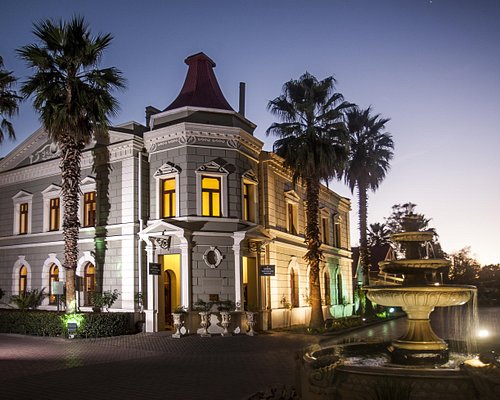Johannesburg North Attractions - The Facts
Johannesburg North Attractions - The Facts
Blog Article
8 Simple Techniques For Johannesburg North Attractions
Table of ContentsGetting The Johannesburg North Attractions To Work5 Easy Facts About Johannesburg North Attractions ShownJohannesburg North Attractions - TruthsThe Definitive Guide to Johannesburg North AttractionsJohannesburg North Attractions Fundamentals ExplainedHow Johannesburg North Attractions can Save You Time, Stress, and Money.
The city owes its area to the presence of an even more valuable resource: gold. The city expanded on the side of the Witwatersrand Key Coral reef, a below ground stratum of gold-bearing quartz-silica conglomerate that arcs for numerous miles beneath the Highveld. A lot of the gold mines in the city stopped operation in the 1970s, however in its day the Witwatersrand gold sector accounted for greater than 40 percent of the world's yearly gold manufacturing.Johannesburg has a warm climate. The city appreciates about eight hours of sunshine per day in both winter season and summer.
What rainfall the city gets falls nearly solely in the summer season, often in incredible late-afternoon electric storms. Air air pollution presents a significant issue, particularly in the winter season, when thermal inversions hamper the westward flow of air from the Indian Ocean. Air pollution is most severe in the largely settled Black areas on the city's periphery, where lots of locals still count on coal for gas.

The Buzz on Johannesburg North Attractions
The balance of the city is inhabited by whites. Lodging differs in character and top quality.
Physical growth, although rather limited by transportation, proceeded quickly as immigration to South Africa, and Johannesburg in particular, enhanced significantly.
Many bad suburban areas were combined, with inadequate blacks and whites cohabiting, although the rich residential areas were generally reserved for whites. This altered with the political election of the National Celebration in the 1948 elections, who began to formalise the system known as racism. Discrimination officially marked which suburban areas each race could stay in under the Team Areas Act.
The number of people living in the internal city on a casual basis is unknown, as many are prohibited immigrants. The joblessness, education, and age profiles of the location are all unidentified, due to the difficulty find out of obtaining reliable details regarding the area.
The Of Johannesburg North Attractions
Yeoville and Bellevue have a mix of apartment and solitary residential units on little whole lots. The area is located on a mountainous divide that ranges from eastern to west. One of the most find out here noticeable geographic feature is Observatory Ridge, which is named for the big observatory situated on it. The recreational spaces are no more made use of, due to safety troubles.

Johannesburg Arena, a training ground for both the Golden Lions and Orlando Pirates, is adjacent. The eastern residential areas of Johannesburg are situated in the city's 7th [] and 9th [] regions. The location is likewise functionally integrated with East Rand boundary towns beyond the main boundary of Johannesburg, such as Bedfordview and Edenvale (both component of Ekurhuleni Metropolitan Town).
The smart Trick of Johannesburg North Attractions That Nobody is Discussing
R. Tambo International Airport). The eastern suburban areas you can try this out are some of the oldest locations of Johannesburg, there are huge communities of Jewish and various other European histories, the majority of the population is English speaking. There are 3 fairway as well as a variety of safeguarded ridges with viewsites. There are several well-developed and up-market amusement and shopping areas in the eastern such as the Eastgate Purchasing Centre and the Greenstone shopping centre.
Initially built to house male migrant workers, many have actually been enhanced as homes for couples and families. The residential area was not traditionally enabled to create work centres within the location, so practically all of its locals are travelers to various other parts of the city.
The Greatest Guide To Johannesburg North Attractions
The N1 Western Bypass attaches the northern suburban areas with the north-western suburbs. The suburbs in the northern residential areas are primarily official, without considerable locations of informal housing, or real estate that does not have a permanent framework. Although this is a recognized location, there is a fad of land use adjustment from residential to industrial, specifically along main arterial roads and around well established nodes.
Roads to the eastern and west are much less well established, as there are no freeways travelling in that direction. In the direction of the north boundary of the city, the density of development decreases, leaving huge locations of primitive land around Midrand.
The 3-Minute Rule for Johannesburg North Attractions
The initial residential area to the north of the central city is Parktown, which is situated on a hill overlooking the central city and Hillbrow. It has numerous well-off locals and Edwardian-style estates, along with the Education and learning and Clinical universities of the College of the Witwatersrand. The large concrete Charlotte Maxeke Johannesburg Academic Hospital dominates the sky line of Parktown.
Report this page